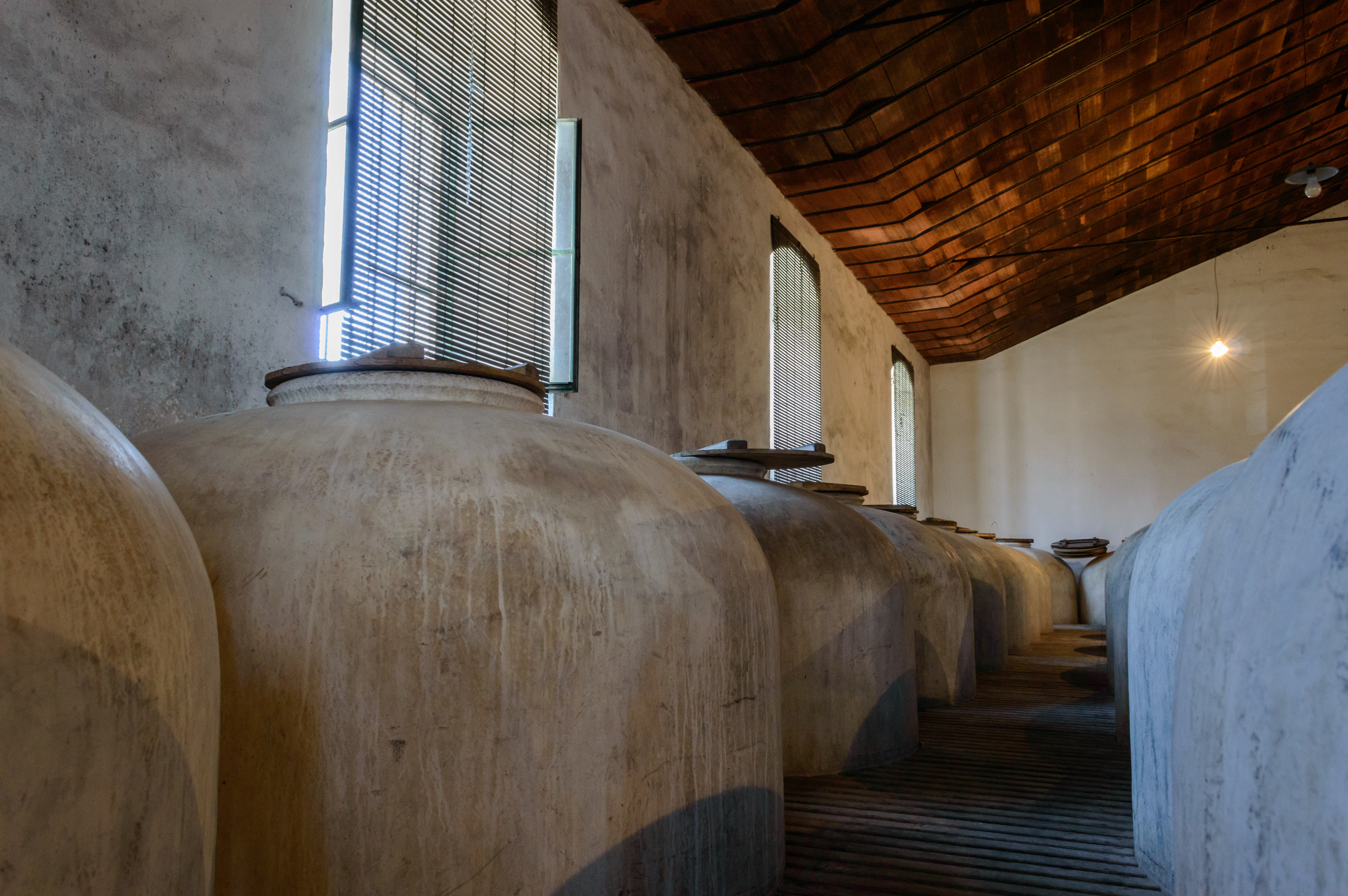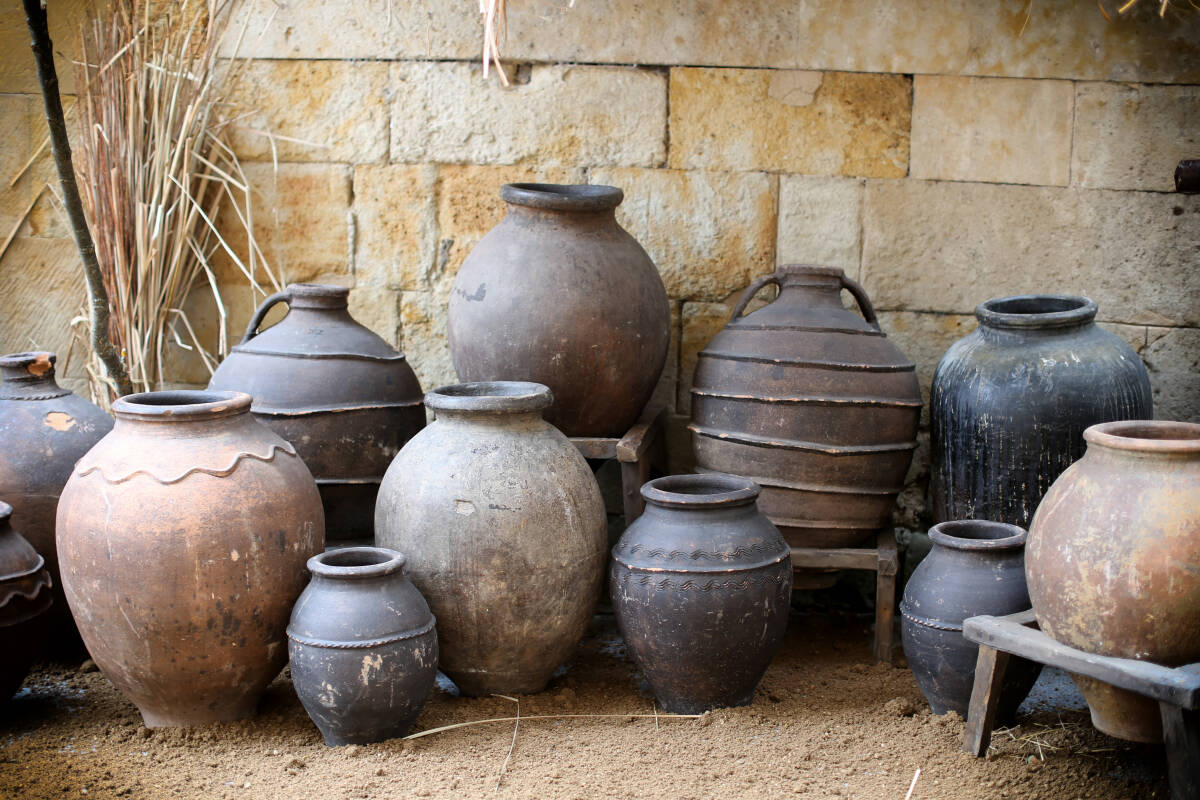
When the past is the benchmark for making wine in the present
Any time in the past was better than the present. How many times have we heard this phrase? A phrase that sums up the nostalgia that takes hold of people who think that what they lived through was better than what they have left to live. Perhaps some of you, after a brief analysis, do not want to see it in your own flesh, but if we go deeper we will soon realise that we also act in this way. We have many examples, or don't you think that the music of yesteryear was much better and more elaborate than the music of today? Let's move on, shall we? Relax, in the world of wine as in many other areas of life, this happens in the same way.
The world's leading winemakers cling to the old traditions of the countryside to make their wines. We are used to seeing images of a beautiful horse ploughing the vines on the websites of small wineries. Very bucolic. But what's the truth in this, is it a pose or does it have a basis behind it?
Not everything old is perfect or miraculous in wine. Winemakers are aware of this and many, although they keep a purely rural and rustic image, have 21st century machinery inside their cellars. The big difference between the way wine was made in the past and the way it is made today is technology and the possibilities it offers us.

The reasoning
The main incentive to look to the past in order to make the wines of the future lies in ecology. The world is now much more populated than before and the demand for food is significantly higher than it was centuries ago. Agriculture in the 20th century underwent a revolution at all levels to respond to this massive demand. This revolution was based on a misuse of technology; pesticides, herbicides, synthetic fertilisers, all geared towards mass production. We wanted fruit, food at all costs and without disease problems. The big farm machinery, harvesters and grape harvesters were there to make it all easier, faster and cheaper.
The problem was that few people stopped to look at what all this could do to the crops. As human beings only respond to stimuli when it affects their pockets, global awareness was slow to catch on. Even today, some people still do not want to face the change to produce in a more sustainable way. Soon the land began to show signs of fatigue. The use of these synthetic products was increasingly necessary to guarantee production, and farm products tasted less and less like what they should taste like. You may have tasted a beautiful tomato that has no flavour whatsoever.
Many winemakers have come to these procedures after having worked conventionally. The reason is that they consider that it allows them to get closer to their environment, as many of the traditional practices were defined for each specific environment.
The first reactions always come from small producers, which is why today we see many small wineries championing organic, biodynamic or regenerative viticulture. This is understandable, as it is easier to do this on small plots of land than on the large extensions of land owned by other producers.
The aromas of the traditional
The truth is that the results of a good part of these artisanal works manage to differentiate themselves from the rest thanks to the fact that they are closer to what the place of origin gives them. Firstly, respectful work in the vineyard generates life in its environment, through plants, insects and microbiology (something that regenerative agriculture already does), which, curiously enough, is transferred to the aroma and flavour of the wine. Many plants leave their mark. Some wines can remind us of wild flowers and plants, camomile, anise, shrubs.... is no coincidence. If we have the opportunity to visit the vineyard of origin, we will see that all these aromas are there, in its landscape.
Making wine in a "tinaja" (amphora) has also made a comeback in recent years. In the right hands, the tinaja can be very interesting, but what does it add to the wine? First of all, aromatically, wines made in amphoras have a slight oxidative note, not an oxidation flaw, but a hint that oxygen has played an important role in the winemaking process. Another peculiarity of these containers is that they show a very particular aroma of clay in the wine, an aroma that in the mouth leaves an interesting reminder of soil and warm bricks.
Cement has come back to stay. Has it ever ceased to be present? Actually, for quality wines it had been left aside, but in the last decade many top producers have started to use it again.

There is no clearly identifiable aroma or flavour in the wine that makes us realise that it is a wine made in cement. What this vessel can do for us improve the expression of fruit, as well as the finish left on the palate, as many winemakers consider that cement adds final tension to the wine, like a tightness that makes it more vibrant.
SO2, for or against?
Another trend in Spain, and I say in Spain because in France there are many winemakers who have been working in this way for years, is the elimination of sulphur dioxide (SO2) in the winemaking process. Let's remember that this element is used to protect the wine against possible undesirable developments. The more daring winemakers risk omitting its use altogether. This practice can bring the consumer unpleasant surprises if the wine has not been meticulously produced, as the bottles are subject to a kind of evolution that is not always easy to predict. It goes without saying that the more international winemakers who are a little sensitive to the abuse of this substance prefer to add a small dose of SO2 during bottling, in order to protect their wine for long journeys to other countries. An excess of SO2 can be easily identified by the consumer, as it leaves a pungent sensation in the nose when we smell the wine in question and also prevents the wine from expressing itself aromatically in a more open and direct way.
The caricature of the ancestral

As one can imagine, not everything ancient is wonderful, and not everything modern is terrible. Success lies in balance and wineries know this. More and more we hear wineries resorting to the traditional methods of winemaking, earthenware vessels, concrete, long ago deprecated, is once again gaining relevance. These trends have two types of followers, those who do it for the photograph that they will later transfer to their social networks, and those who do it out of conviction. The latter, undoubtedly the most interesting, usually have the training and knowledge of the 21st century that they adapt to the old production methods, taking what is useful and discarding what is obsolete.
It's funny and even cartoonish how, in this change of philosophy, many producers adapt their clothing to the rustic and rural concept. Many of those who wore suits and ties in the 90s have switched to T-shirts and sweatshirts, much more in line with the new wine times of course.
Unfortunately, not everyone has the ability to transfer all their knowledge to the old ways of working of our ancestors, as it requires great sensitivity and also a great deal of training. The results are always evident in the wine and the most meticulous in their work is always the one who obtains the greatest benefits in their wines.

 Log in
Log in


